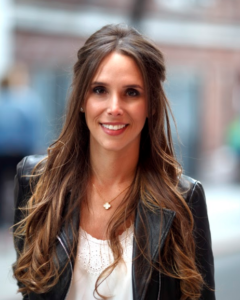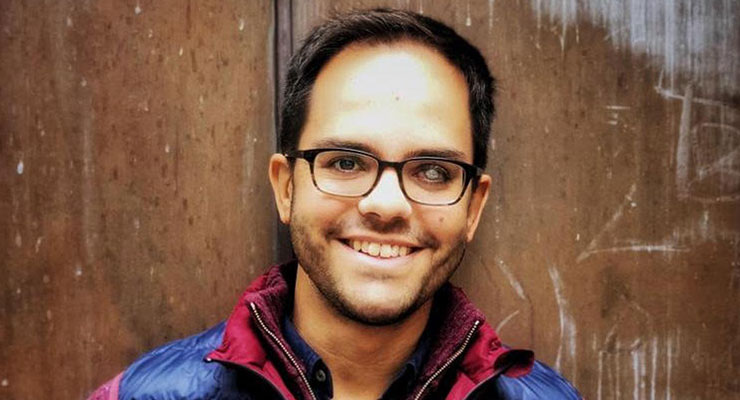
Carlos Reines On Turning A Devastating Childhood Accident Into A Thriving Business
July 11th, 2019 Posted by tp33 Podcasts 0 thoughts on “Carlos Reines On Turning A Devastating Childhood Accident Into A Thriving Business”Podcast: Play in new window | Download (Duration: 40:14 — 83.2MB) | Embed
Subscribe: Android | Google Podcasts | RSS | More
First-time founder and Harvard grad Carlos Reines, who was nominated by the World Economic Forum as Young Global Leader opens up about his tragic childhood accident and how that shaped his life-work today through RubiconMD — an eConsult platform that connects clinicians to top specialists. Now serving over 5,000 primary care physicians in 37 States, RubiconMD has saved over 2.5 Million days of patients waiting for specialist consults, which is almost 7,000 years.
Carlos talks about his struggles early-on when he launched RubiconMD and how, after many iterations, he designed a dialed-in hiring process to assemble a top tier team that not only has individuals with world-caliber credentials but that act as a team and feel connected to the mission of the company– democratizing and improving access to quality healthcare.
In this episode you will learn about:
-
-
- Healthcare innovation
- Leadership
- Leadership Mistakes
- Building a startup
- Managing and scaling a team
- Raising capital
- Company Culture
- Effective Feedback
-
About Carlos Reines:
Carlos is one of the cofounders at RubiconMD. The company was founded in 2013 with a driving vision of democratizing medical expertise so that providers can offer every patient the care they deserve.
Originally from Spain, he’s passionate about leveraging technology to drive change in healthcare.
Prior to RubiconMD, Carlos led a division at Telefonica, one of the largest telecom companies in the world. He began his career at Siemens Healthcare.
He earned Masters’ in both Bioengineering and Telecom Management in Madrid, and an MBA from Harvard.
Connect with Carlos Reines:
* * *
Full Transcription:
Carlos: I think I always had an easy one because my dad’s name is Carlos as well. I don’t think they had to break that too much.
Tanya: That’s great, so they followed the wonderful Spanish tradition on naming.
Carlos: Yeah, absolutely.
Tanya: That’s Carlos Reines, Harvard grad and entrepreneur who raised $20 million for his startup RubiconMD, an eConsult platform that connects clinicians to top specialists. Now serving over 5,000 primary care physicians in 37 states in the US, RubiconMD has saved over 2.5 million days of patients waiting for specialist consults, which turns out to be almost 7,000 years.
Carlos: I grew up in Madrid. Actually, all my family is in Madrid. I was born and raised there, lived in the center of the city for the first few years, and then we went to the suburbs when I was about 5 or 6. I’ve really been in Madrid most of my life. When I was 22 is the first time that I went to study abroad. Through different work experiences and educational experiences, I’ve ended up spending time in the Netherlands, in Germany, and obviously, a lot of time in the US.
Tanya: If you were to describe yourself as a kid, how would you describe yourself?
Carlos: I was the only child, only nephew, only me, no cousins, for ten years. My mother is the oldest of six. On my dad’s side, his uncle never had children, so for about ten years, I was there by myself. I was getting a lot of love from the entire family.
Tanya: I can imagine.
Carlos: At the same time, I was dying to get some folks around. I wanted to have cousins. I wanted to have siblings. In Spain, there is a big tradition in Christmas that the Three Magic Kings will bring you games and toys, and when I was a kid and I would write my letter, I would never ask for any games or toys. I just wanted to have a brother or a sister. I wanted to have that for a long time. It never happened, so I grew up as an only child. At some point, my parents had friends that lived outside of Madrid, and their son moved to Madrid for college. He was about five years older than I am, and he went to live with us. For three years, all of us had – I had an older brother, and it was an awesome experience.
Tanya: I can imagine. After all that time, it must’ve felt great to have company.
Carlos: Absolutely.
Tanya: Something important happened when you were a child.
Carlos: When I was 8, I was playing on the street with other kids. We were playing with slingshots. It was just kids who are the street, and I was hiding behind the car. Unfortunately, somebody was incredibly accurate, and they hit me in the eye. That was actually a pretty severe accident that triggered three very complex surgeries. Probably over the span of two years, I lived half of the time either admitted to the hospital or sitting in an ophthalmologist office. I couldn’t go out. I couldn’t play with other kids. I had to be incredibly diligent with my eye drops.
That was actually very tough. As an 8-year-old, all you want to do is to be outside and then play and not have to worry about anything, and I had to go through a lot of complications. Eventually, I had the surgery where the ophthalmologist said the best thing we can do is stabilize the eye, and this is something that you should reevaluate whether you can have more surgeries or there is any path forward maybe in 15 or 20 years as an adult. That was between age 8 and age 10, roughly.
Tanya: Wow! That’s brutal. How did that influence who you are today and shape your outlook on life?
Carlos: I think it influenced me in many ways. I wish I didn’t have that accident, but at the same time, I’m very grateful for all the things that I’ve learned out of that experience. I think mostly on – probably on three different levels. The first is what I do now was definitely influenced by what happened to me, right? I decided to become a healthcare technology entrepreneur, and I started RubiconMD. This is, obviously, years later. This is only a few years ago, but out of that experience, I grew the motivation to want to fix healthcare because I had experienced myself just of not having access to the right care at the right time. I knew that somebody had to fix it. Eventually, that’s where I gained the strength to go pursue this mission that I’m working on now, so one was in shaping what I wanted to do.
I think, two, I’m also really grateful for a lot of the strong relationships that I’ve been able to develop, very close with really everyone in my family, so at the time of the accident, I felt incredibly supported. There wasn’t a day where I was at the hospital and I didn’t have either my parents, my uncle, my aunt, someone sitting with me. I think that is reflected in now it’s 20 years later or 20 or 30 years later; I have incredibly strong relationships with them, with everyone in my family and also friendships. I remember when this happened, and I had to go back to school. I couldn’t go out and play outside. I had to stay in the classroom, and I had to use my drops. One of my friends at the time would stay with me every single break. Instead of going out to play soccer or whatnot, stayed indoors playing with me. He was the one putting the drops in my eyes. Again, almost 30 years later, he’s one of my best friends now. I think of a lot of those relationships really solidified, and those are really priceless.
Tanya: How did you handle the person, the child that caused the accident?
Carlos: I didn’t, really. This happened when I was 8. At 8 years old, you barely understand what’s going on, what’s happening. I don’t think I ever saw that kid ever again or spoke to him again. Not because I didn’t want to. It’s just the following two years I was, basically, at hospitals and doctors’ offices, and after that, we never had an opportunity to reconnect. I think one thing that’s interesting is that you really don’t understand what’s going on, and I think, for me, it was probably, I don’t know, maybe five years later or so when I was growing up, when I was going through adolescence that I started to realize that I had gone through a pretty serious accident and understand a little bit of the implications. It was probably more difficult in those years than it was originally. As a kid, I was just cruising through life.
Tanya: Yeah, I can imagine. Do you feel affected in any way by what happened to you today, or what is going on with your eye?
Carlos: No, not really. The good news is that we are born with two eyes, so despite having pretty limited or not really any useful vision in that left eye, I can do everything normally. It didn’t stop me from being able to drive, being able to play sports, or have a perfectly normal life. I don’t think it’s put any restrictions into anything that I do, but I do think that I’ve developed a lot of capabilities that I probably wouldn’t have developed if I didn’t go through this. I think a lot of that is pretty well reflected and really helpful as I’m going through the entrepreneurship journey, which is a brutal experience. A lot of the things that I learned at the time, being able to work through challenges, jump through hoops, or remove any hurdles that are put in your way, I think the perseverance that you need as an entrepreneur, I think I found a lot of that in having to figure out life going through a lot of the challenges as a kid.
Tanya: Yeah, I mean, that’s unquestionable that your accident was the training ground for your career. Not only as an entrepreneur, but in healthcare, you were firsthand affected by the problems that you’re actually trying to solve today. How did you get into your entrepreneurial journey?
Carlos: It really started in 2012. Up until that time or before that, I was in Madrid. I was working for Telefonica, which is one of the largest telecos in the world, and I actually had a really cool job. I was part of this corporate unit. It was called the Global Chief Technology Office, and we would do technology projects across all of 25 countries where the company operates. We would be standardized in best practices, technology guidelines, choosing solutions; that everybody rolls out the same technology and be more effective. I got to interact with, really, all the areas of the business.
Then a friend convinced me to apply to business school and to apply to schools in the US, and in 2012, I found myself packing and moving to Boston to start business school at Harvard. Going in, I knew I had – so before that, I had worked for Siemens and Telefonica, two massive companies. I thought this is the perfect transition to try something else, to go early stage. Why not, to start something myself? I really spent my first year in business school going to a lot of the entrepreneurship events in Cambridge. There are startup weekends and hackathons virtually every week.
By going to a lot of those, eventually, in March of 2013, I met my co-founder, Gil, at a Hacking Medicine event at MIT where he was pitching the idea. He was also inspired by personal experience where his grandmother had a brain tumor. She was from Barbados, and she had to travel to Boston for surgery and then for the postop care. He was also frustrated with the limitations of accessing care, and the two of us worked together through that weekend. We found that this is an idea that made a lot of sense. We were excited about that we could execute, and on top of that, we got along really well. We had very complimentary styles, and we decided to start a company together.
Tanya: Wow! That’s RubiconMD.
Carlos: That’s RubiconMD, yeah. Basically, what we do – so the two toughest problems in healthcare in the US – probably number one is, obviously, the fact healthcare is an incredibly expensive sector with almost 20% of the GDP spent in healthcare. That’s twice as much as any other advanced country of their healthcare expenditure relative to the GDP with it actually achieving better population health metrics, and then on top of that, you have about half of the country who really struggle with access to care. We quantified that more than 50% of the population in the US have real challenges accessing a specialist, and that’s real unfortunate. We decided to tackle a dual problem by letting primary care clinicians submit electronic consults to specialists, so whenever a PCP has a case that’s a bit more complex, what they do is they access our platform. They type up a brief description of other patients. They ask a question, and they send it to a specialty. We have a top specialist review and get back to them with their impressions and recommendations in a matter of hours, and that allows the primary care clinician to make a much more informed decision and diagnosis, treatment plan, and next steps for the patient.
Tanya: I mean, I think that, first of all, what you’re doing at RubiconMD is pretty amazing. I can’t tell you how many times I went to a pediatrician or a general practitioner and said what’s going on here? They send me to God knows who, and it takes time to get the appointment. You’re looking at months before you even get to loop back with the primary care physician. It’s frustrating, so that’s amazing. How many clinicians and primary care physicians do you serve?
Carlos: Oh, we must have probably about 5,000 clinicians across the country. We are present in 37 states working really with all flavors of primary care. One thing that’s fascinating is that you just share your experience. It was frustrating that you probably wasted time and money and things that were not really necessary, but one thing is that you could afford it. Even if it was painful, you had access to care. About 60% of what we do is safety-net populations, uninsured, undocumented, Medicaid patients that are looking at wait times measured probably in months if not years. One of the things that’s really fascinating of what we do is that we are bridging that access gap for the most underinsured populations who are now through their primary care clinician getting access to the expertise of some of the best specialists in the country, and that’s where we are executing on our mission of democratizing access to medical expertise.
Tanya: I love it. That’s amazing. How big is your team now?
Carlos: We are about 45 or 50 people, most of us headquartered in New York City. Then we have West Coast office in San Francisco, and we also have a few remote engineers based in Spain.
Tanya: Amazing, all the key locations. I just want to shift gears a little bit. In terms of what it took to actually begin the company – well, first, what do you do at Rubicon? What’s your job?
Carlos: As the president and co-founder, I oversee the delivery side of things, so I work very closely with the product team helping inform a lot of the road map and future decisions with the input that I get from the market. I work closely with the operations team; help them build for scale. I work closely with the implementation customer success teams, and they are supported by what we called user engagement. It’s, basically, we’ve taken the approach in a loop – all the learnings that traditional tech companies have in their growth hacking teams and adapted it to bring it to healthcare so that we could do rapid experimentation and learning around the things that work for clinician engagement with technology. Those are the teams that I oversee. I think, as a founder, I can’t get out of being on the road a lot of the time, so probably a good portion of my time is still dedicated to business development and checking in with our partners.
Tanya: Okay, yes, and aside your actual job, you have a bazillion other jobs. Your job is to just make the company successful, whatever it takes. When you start a company in the early days, it’s brutal. It takes a lot. What were the early days of RubiconMD like for you?
Carlos: Yeah, so the early days were actually really hard and, at the same time, really fun starting the business. I was my first year of business school when I met my co-founder March of 2013 over that weekend at a Hacking Medicine event at MIT, and then we followed up, did a second hackathon about a month later. It was called 3 Day Startup, and we won best pitch. Then we said, well, this actually has a lot of potential. I think there’s an opportunity to build a business here, so shortly after that, we incorporated the company. That summer, I moved to New York, and that’s when we worked on developing the first prototype. We found one clinician who wanted to give it a shot, someone who had trained with Gil’s brother or had trained Gil’s brother in Connecticut, and we recruited maybe three or four specialist. That’s all we had at the time, one PCP, and I think one cardiologist, one dermatologist, one orthopedic surgeon. Not more than that.
We built a prototype that I put together, a very simple MVP. It was just the front end. What the person would do is they would access the “platform,” platform in quotes. They would submit a consult. I would get that, and I would have to do everything manually. I would have to run those cases manually to the specialist. When I got their responses back, I had to go back and tweet the front end of the platform, so it was incredibly manual.
We did that for probably about 200 consults, and then we regroup with this primary care physician in Connecticut. He said something that was fascinating. He said, “Well, first of all, this is the most doctor-to-doctor communication I’ve had in ten years, and on top of that, I’m not only learning things, but I’m also able to improve care for my patients who would have otherwise not had the ability to go see a specialist and maybe would’ve had to end up in the ED. I’m actually not only doing better care, but I’m also generating big cost savings for the system.” That was for us the biggest validation. We had a clinician who was getting a lot of value clinically, and his patients were benefiting a ton. That’s when we decided to raise a little bit of capital and start building a team and to actually build a legit platform.
Tanya: What was one of the toughest moments professionally you had to deal with as a leader?
Carlos: I think the first year was brutal for me because I was still in business school. We applied to an incubator. They said we’ll take you guys if you drop out of school. I was already going back. I was already starting projects with classmates. I was really using every class to apply to the business. We decided that it made more sense for me to finish business school, but that also meant that I was doing two things at the same time, right? I was starting a business from the beginning, and I was going through my second year of business school, and that was brutal.
I remember days where I would go to class in the morning, and then I had to get in a car, drive to New York. We were meeting with investors or a potential customer, or we were talking about the product and then drive back. Many days I find myself – it was midnight. I was dead tired, and I had to do a lot of homework and reading for the next day so eventually managed to go through both. I still got a lot of value out of school. At the same time, we continued to grow the business, but it was brutal. I remember the last days where I was like I can’t take one more class, one more case, or I’m going to break.
Tanya: I can’t even imagine. That’s so crazy. At what point did you start to raise capital and really see your team grow?
Carlos: The first capital we raised was when we – before we launched that really early pilot, we had some basic cost that we had to face before we could start operating. Things like liability insurance and funds to pay the specialists and just the basic things. The first time was actually pretty interesting. We had met this person through a friend of ours, and he was the former CEO of a very large health plan. We connected with him, and we was initially just an advisor. He started to give us his take on how this could fit into healthcare. What are the things that we should have in place? Eventually became a little bit of a more formal advice. We were checking in with him regularly.
We asked him, what would be your advice? We’re at a point where we need to raise some capital. Do you recommend us to start by going to a fund, going to a few angels? What do you think? He offered himself. He said, “Well, if I was interested, would you guys take an investment from me?” It was very natural. Of course we would, right? He had been incredibly helpful already.
That’s how we found our first investor. It was very natural, and then a lot of angels piled up on top of it. He obviously brought the credibility.
Tanya: It was a strong signal.
Carlos: Exactly, then we had other investors who were maybe stronger in tech but having someone who’s such a healthcare expert, a physician, a manager, CEO to back our model, it was a strong signal. Probably the first half a million dollars we had raised was through super angels. Then we started working with some of these early stage health IT funds that invested. That was our seed round. Which from the first check ‘til we closed it, we probably kept it open for about a year. We were just raising capital as we were getting more traction, and eventually, it was about 1.3 million that we raised with a combination of angel funds and one strategic investor that joined the round at the end.
Tanya: At what point did you start thinking about RubiconMD’s culture?
Carlos: That probably happened after we did our Series A. Our Series A was about a year and a half after we had closed our seed round, and that was the first time that we went through multiple hires. Right up until that time, it had been the three founders at the beginning and super-early employees that were part of the founding team so a very small team. When we started to bring more people onboard, it’s when we realized that the culture was going to be incredibly important. We didn’t get it right the first time. I think through the first iterations of hires, we brought people who were really good but maybe weren’t the best cultural fit for what we wanted to – where we wanted evolve. I think, as we were growing the team and through some of these successes or failures in growing the team, we started to realize the importance that having a strong culture would have for the company. Where we are today, I think culture is incredibly central for us. We dedicate a lot of time, resources, and attention to it, and I think it’s one of the key assets of RubiconMD.
Tanya: Awesome, and what is RubiconMD’s culture?
Carlos: We define our value system human, agile, innovative, and collaborative. I think that’s a good characterization of what you would see across the board in the team. First of all, I think I told you my personal story, and I shared a little bit about my co-founder’s personal story for why we do this. When I look inside the RubiconMD team, almost everyone or everyone has a reason why they’re doing this, right? They could be doing something else that’s maybe more comfortable, or it has more perks, but they’re all here because they are incredibly mission driven. They want to change the world through their skillset. I think that’s number one characteristic, very, very strong mission in the team. Number two, we’ve been able to attract really talented individuals that thrive really well in the craziness of the startup journey, right? You need folks that are the – that can function autonomously and that want to be pushed really hard and can solve really hard problems and collaborate really well with each other, so I’m very proud of the talent that we’ve been able to bring onboard.
The third element of our culture is diversity. You would think that for a company that has to work really fast and that’s, basically, optimizing for having folks that are mission driven that you could expect that most of us would be the same or have the same backgrounds, and I think it’s quite the opposite. Some people refer to us as the UN of startups. We have so much variety in terms of countries of origin, backgrounds, races, gender. I think we’re about 60% female represented across the board, right? It’s not that we have just a very large marketing team with a lot of women in it. No, we have female representation across the entire company in leadership. Even at the board of the company we have female representation.
The beauty of this is that diversity has never been – we’ve never pushed for that. We’ve never even thought about or quotas or anything like that. It’s happened naturally. I think as we’ve been able to grow a more and more diverse culture, it also becomes a magnet for people who thrive in that environment, and that, in a way, becomes a self-fulfilling prophecy.
Tanya: That’s amazing. I mean, the fact that it happened naturally and it wasn’t in response to what’s going on in the environment today in business, that’s amazing. What type of resources do you use to really keep yourself engaged and growing as a leader?
Carlos: I put a lot of attention to it. There are several things that I do. Number one, inside the company, I think it’s incredibly important to encourage a culture of feedback, open, transparent, honest 360 feedback. We have that in place, but I particularly push really hard folks in the team to be very candid. That’s the only way I can learn about my limitations and work on getting better, so that’s from the inside.
Tanya: How do they provide you feedback? Do you have a quarterly meeting or a survey that goes out? What’s the setup of that feedback loop?
Carlos: We have a lot of things in place. This culture is so important. Our head of people in culture spent a lot of time working on it. Twice a year we do employee reviews. Those are reviews by their manager, but in between those cycles, we have peer review sessions so that we can get feedback from a personal level to the organization and from everybody. It is a time consuming activity. It takes a lot of resources, but I think it’s incredibly worth it.
Then we encourage feedback, and we enable multiple talents to provide it. There are folks that will be very comfortable providing direct feedback to a person and identifying themselves as the authors of that feedback, and there are folks who are more comfortable just giving in a more anonymous way. What we do is we have each manager collect feedback from different sources, and they package it up, and then they deliver it to an employee. Where somebody is comfortable and wants to provide more one-to-one direct feedback, they’re welcomed and encouraged to do that. If people prefer to provide it in a way that’s a bit more anonymous because they don’t want to potentially harm a relationship, that’s also fine. All we want to do is the people – make sure that people have enough content for them to understand what are the areas where they can keep improving, and also, what are the areas where they are doing really well and that other people appreciate?
Tanya: Just curious, what was one of the pieces of feedback that you got that was impactful for you?
Carlos: I think, one of the pieces of feedback that I’ve received, it was very insightful is that there’s feedback on feedback, right? I spent a lot of time providing constructive feedback because I feel like I owe it to the employees. It’s my job to make sure that everyone here is getting better and better and learning new things every day. I have a very natural tendency to focus on the constructive feedback. Folks really appreciate to also learn what are the things that are working well? Not just to get the pat on the back but to be aware that, something they are doing, it’s actually very effective, and they need to keep doing it. That was a very important piece of feedback. That I should spend more time also on the positive feedback and reinforcing the things that are going well as much as I do on the constructive feedback, and what are the elements where folks need to work on to improve?
Tanya: Really, encouraging not just for what needs to be improved but also what’s working, which makes sense. When things are working, you don’t put as much thought. They just work.
Carlos: Right, and I think that’s a – that’s why I naturally go to how can we better? It’s that obsession with we keep growing, but I think it’s a very fair point to also recognize people when they do things well.
Tanya: Yeah, absolutely. What was your favorite or your most influential leadership or management book that you read recently?
Carlos: I’ve been reading a lot recently around hiring. Probably one of the most important and at the same time one of the most underrated functions at any company or qualities in many leaders is recruiting and talent management. I don’t understand why in many places HR remains a function that’s a little down or not properly respected. The most important asset for most of the companies and definitely for us is the human capital, the talent that we have onboard.
Tanya: Without a question, yeah.
Carlos: I’ve learned that a great employee who is mission driven, highly motivated, and whose performance is really high is incredibly valuable. I spent a lot of time reading about the topic either – in particular, two books that I found really helpful around improving the hiring processes and talent management. Those were Work Rules!. It’s a book by Laszlo Bock. He was the former head of people at Google. From that one, I took away – I guess one thing they did, it was fascinating, is that they mapped all hiring processes, and they understood the ratings that people had given. They map it out to how that correlates to the success of the hire in the job. After tens of thousands of hires, you start to see some interesting trends, so they have a pretty thoughtful framework for how to structure an interview. It’s very natural for us when we are interviewing someone to just go back to all right, this is the job description. I want to know what you did in the past, and then I’m going to make a decision on whether you’re a good fit for this job or not.
I think that’s short sided because that’s only one of the elements. I think in that book –we’ve tweaked it a bit, but our framework now is we look at a candidate. We want to understand what are their leadership styles? How would they fit with our culture? What’s their general cognitive ability? What’s their role-based knowledge for what they’ve done in the past, but also, what’s their role-based aptitude? What are the things that they’ve done in the past? Even if they weren’t exactly doing this job, how do they prepare them to do the work that we’re going to be asking them to do? We found that by having different categories and letting people focus on specific items of those we are being able to have a much more effective and less biased hiring process.
That was incredibly effective from that book, and then the other one that I also found very interesting is a book – I think it was called Who. It’s, again, a hiring method, and they take you through all the steps that you need to have in place before you go out and start searching for a candidate around properly defining the job and define what are the metrics for success?. Getting internal alignment in the team around what are the things that we’re going to be looking for as we start to bring candidates onboard? Really elevating the team’s ability to be better recruiters and better searchers of talent for the company.
Tanya: That’s super interesting so trying to solve the hiring problem, which is a huge one and at the basis of building a team, really.
Carlos: Absolutely.
Tanya: Awesome, so last question, what is next for RubiconMD?
Carlos: It’s been a little over 5 years since we started the business with about 5,000 clinicians using RubiconMD. When you look at the stats, they are very impressive. Primary care clinicians report that, when they use eConsults, 80% of the times they are able to significantly improve the patient’s care plan. Seventy percent of the times they are building capacity. They’re not just helping patients at one point in time. They’re learning things that they will use in future patient care, and they are avoiding more than half of the times unnecessary referrals, duplicate tests, unnecessary [36:20] cost. It’s been more than proven that this has a ton of impact on the quality of care delivered and the costs that are being taken away from the system and the patient experience. We’ve taken away more than two and a half million patient wait days. That’s time that would have stood in between the patient and the right care plan, particularly for the most underinsured population.
Tanya: Carlos, let me just make sure I understand that, 2.5 million wait days you said?
Carlos: Yeah, that’s correct.
Tanya: In other words, 2.5 million days that patients avoided waiting to go see an expert and get the care that they needed.
Carlos: Exactly.
Tanya: Wow!
Carlos: If they didn’t have eConsults, they would’ve had to wait all that time to get to the right care plan, if they ever were able to get to the right care plan, which in many places they can’t.
Tanya: Wow! That’s almost a lifetime or more.
Carlos: Yeah, the model is incredibly effective. It works really well. Five thousand clinicians is just scratching the surface. There are almost half a million primary care clinicians in the country, and this works really well. Healthcare is very fragmented, so incentives are not always aligned. As much as I would like to see all financial incentives be aligned towards improving outcomes, improving the patient experience, and reducing the cost of care, that’s not necessarily the case for a big portion of the system, but we’re working really hard to work through those challenges. We live in a world where five or ten years from now there shouldn’t be any primary care clinician in the country and why not eventually in the world who doesn’t use eConsults as part of their practice because these are incredibly beneficial for patient care.
Tanya: Yeah, I mean, it makes so much sense. How do people get in touch with you?
Carlos: Anyone who wants to get more info on RubiconMD can find us online at rubiconmd.com, and for anyone who wants to contact me directly and get anymore insights, carlos@rubiconmd.com is my email. Feel free to reach out, particularly if you are a mission driven individual who cares about improving access to care. I’d love to connect with you.
Tanya: Amazing, Carlos, thank you so much for spending the time and sharing your amazing personal story and what you’re doing with RubiconMD.
Carlos: Thanks so much for having me, Tanya. I really enjoyed it.

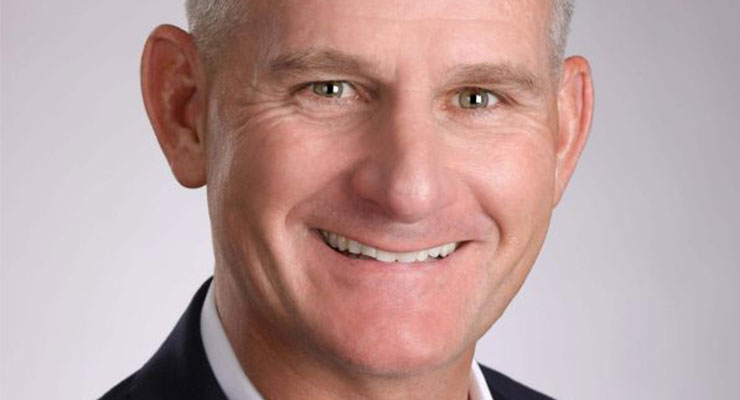
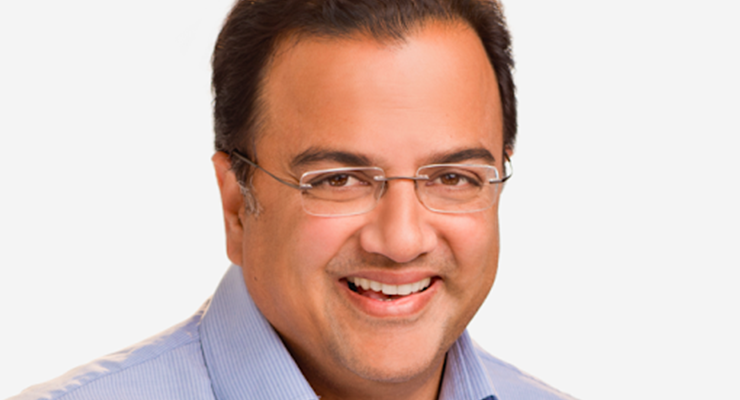
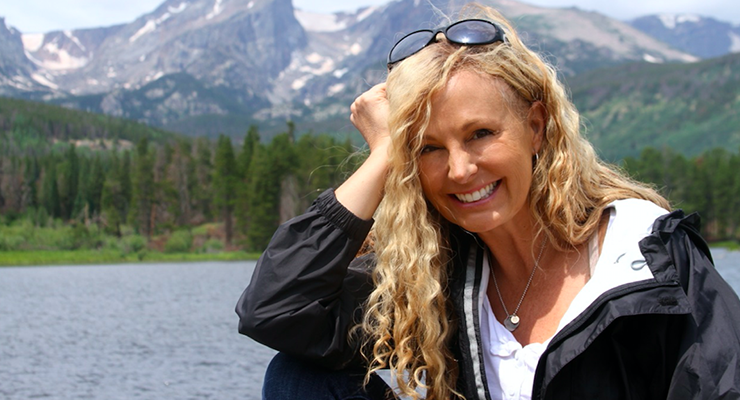
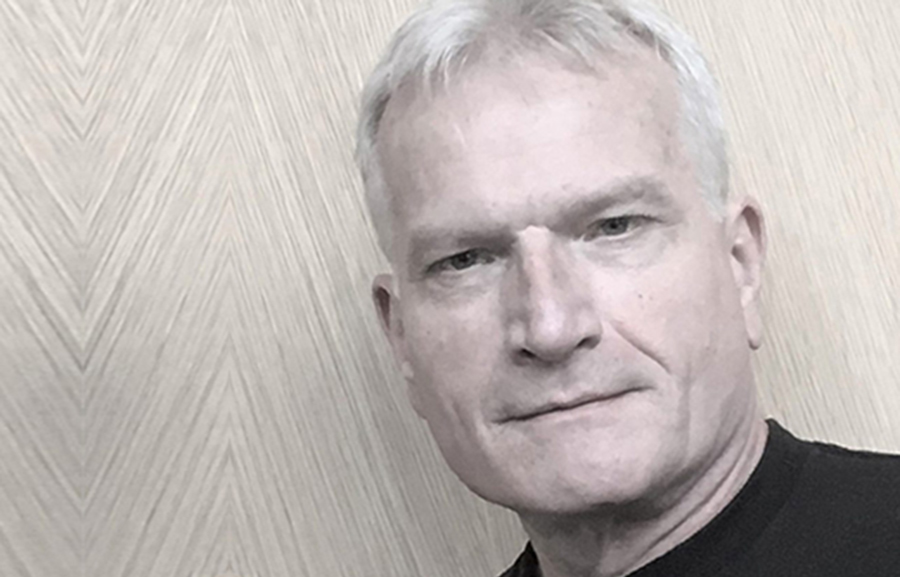
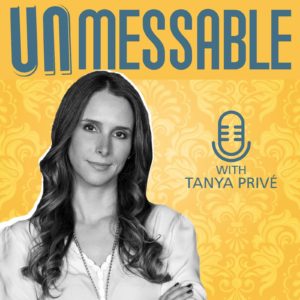 Unmessable podcast explores what it takes to be a great leader via candid discussions with success business operators and renown thought leaders.
Unmessable podcast explores what it takes to be a great leader via candid discussions with success business operators and renown thought leaders.